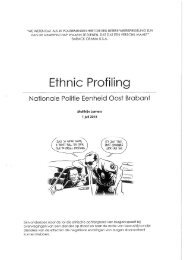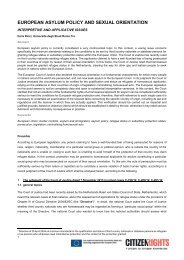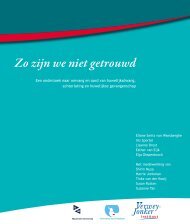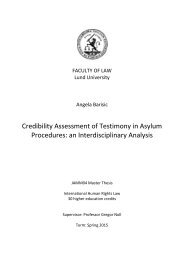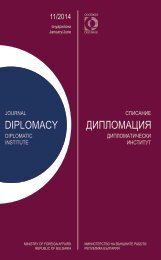AEMI
AEMI-2016-web
AEMI-2016-web
Create successful ePaper yourself
Turn your PDF publications into a flip-book with our unique Google optimized e-Paper software.
Crossing Boundaries: Negotiating<br />
Transnational Heritage and Belonging in<br />
the German Waldensian Diaspora<br />
Elisa Gosso<br />
Introduction<br />
The case of the German Waldensians<br />
examined in this article was studied as<br />
part of my research work for a Ph.D. in<br />
Anthropological Sciences 1 . This research<br />
focuses on the Waldensian diaspora and<br />
transnationalism, and the resulting return<br />
visits of the descendants of Waldensian<br />
emigrants to the homeland 2 .<br />
The term ‘Waldensian’ defines an<br />
Italian religious Protestant group, that<br />
originated in Lyon, France, as an heretical<br />
movement in the early Middle Ages<br />
(Tourn, 1980). In 1532 their members<br />
decided to adhere to the Protestant Reformation<br />
and, consequently, to organize<br />
themselves as a Church. Because of persecutions<br />
from both the political power<br />
and the Catholic Church they were soon<br />
banished from Lyon and scattered across<br />
other regions.<br />
Already in the thirteenth century<br />
they had found very suitable conditions<br />
to settle in some Valleys of the Cottian<br />
Alps, in Western Piedmont, about 70<br />
km far from Turin. Waldensians have<br />
lived in these valleys virtually since the<br />
origins of their religious movement up<br />
to the present day, and there is probably<br />
no other place in which anything<br />
similar has occurred. This is the reason<br />
why this cluster of valleys is known as<br />
the ‘Waldensian Valleys’, or, among the<br />
Waldensians, simply as ‘the Valleys’.<br />
The very definition of the Waldensian<br />
Valleys has been gradually established<br />
both for external and internal purposes.<br />
Under the Savoy dynasty the Piedmontese<br />
government long sought to confine<br />
the Waldensian population to this area.<br />
That policy culminated around the middle<br />
of the eighteenth century in the creation<br />
of a sort of Waldensian ghetto in the<br />
Valleys. Waldensians were not allowed<br />
to live outside the boundaries of the Valleys,<br />
they could not attend high school<br />
and were forced to celebrate Catholic<br />
festivities. That condition ended in<br />
1848, when king Charles Albert, with<br />
his Statute, granted civil rights to the<br />
Waldensians and the Jews of the kingdom.<br />
The new freedom had the effect<br />
of dissolving not only the boundary as<br />
an obstacle, but also – paradoxically –<br />
the boundary as a protective shell for<br />
Waldensian culture. The group itself,<br />
especially its intellectual and ecclesiastical<br />
components, tried in various ways




